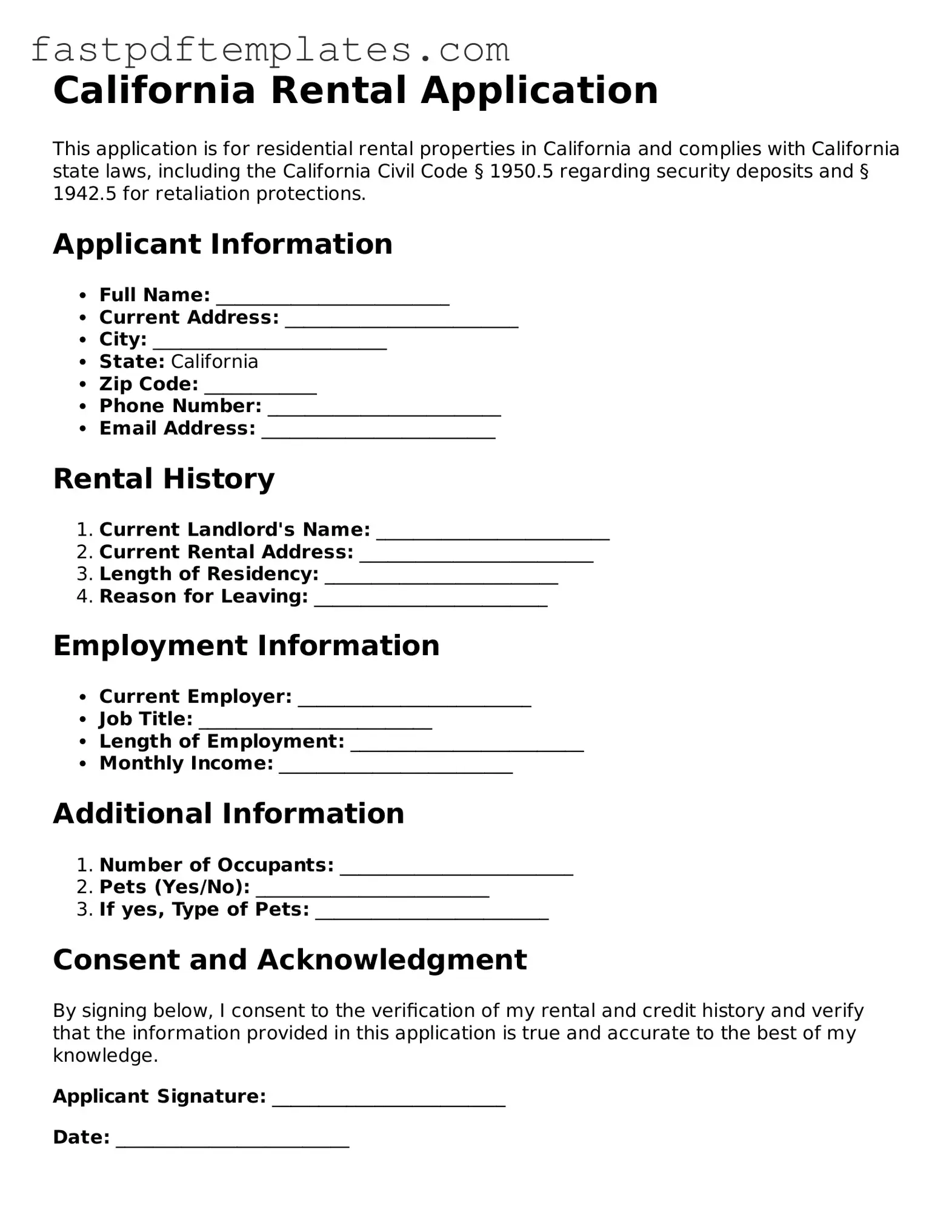California Rental Application
This application is for residential rental properties in California and complies with California state laws, including the California Civil Code § 1950.5 regarding security deposits and § 1942.5 for retaliation protections.
Applicant Information
- Full Name: _________________________
- Current Address: _________________________
- City: _________________________
- State: California
- Zip Code: ____________
- Phone Number: _________________________
- Email Address: _________________________
Rental History
- Current Landlord's Name: _________________________
- Current Rental Address: _________________________
- Length of Residency: _________________________
- Reason for Leaving: _________________________
Employment Information
- Current Employer: _________________________
- Job Title: _________________________
- Length of Employment: _________________________
- Monthly Income: _________________________
Additional Information
- Number of Occupants: _________________________
- Pets (Yes/No): _________________________
- If yes, Type of Pets: _________________________
Consent and Acknowledgment
By signing below, I consent to the verification of my rental and credit history and verify that the information provided in this application is true and accurate to the best of my knowledge.
Applicant Signature: _________________________
Date: _________________________
